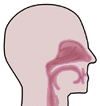  |
||
 |
March 2017Stem cells in sensory receptor functionStem cells play a significant role in receptor function in all sensory function. In our work, stem cells act to initiate receptor function in taste and smell. However, stem cells have recently been shown to initiate receptor function in hearing and we hypothesize in vision as well. In our studies, we have identified the growth factors that stimulate stem cells in the taste system. These growth factors are synthesized in the salivary glands in the mouth and are secreted into saliva. In the smell system, these growth factors are synthesized in the nasal glands in the nose and are secreted into the nasal mucus. These growth factors include a variety of chemical moieties including hormones, trace metals and various proteins such as sonic hedgehog and metabolites of adenylate cyclase. These substances act directly on the stem cells in each sensory system, which enables the stem cells to initiate development of the sensory receptors in each system. The molecular events by which this occurs is at present unclear. Recently, studies involving the cochlea, the inner ear of mice, have shown that after isolating stem cells from the cochlea in the mouse inner ear, these stem cells can be stimulated to generate large numbers of hair or receptor cells In Vitro. These cells are the receptor cells by which the mouse hearing system depends to generate sound. The work appeared in Neuron in 2013. Our recent work demonstrates the role of sonic hedgehog as a growth factor, which stimulates stem cell activity in the taste system in humans. It has recently appeared in Journal of Oral Pathology and Medicine in 2017. Henkin, RI, Knoppel, AB, Abdelmeguid, M, Stateman, WA, Hosein S. Journal of oral pathology and medicine Sonic hedgehog is present in parotid saliva and is decreased in patients with taste dysfunction. |
|